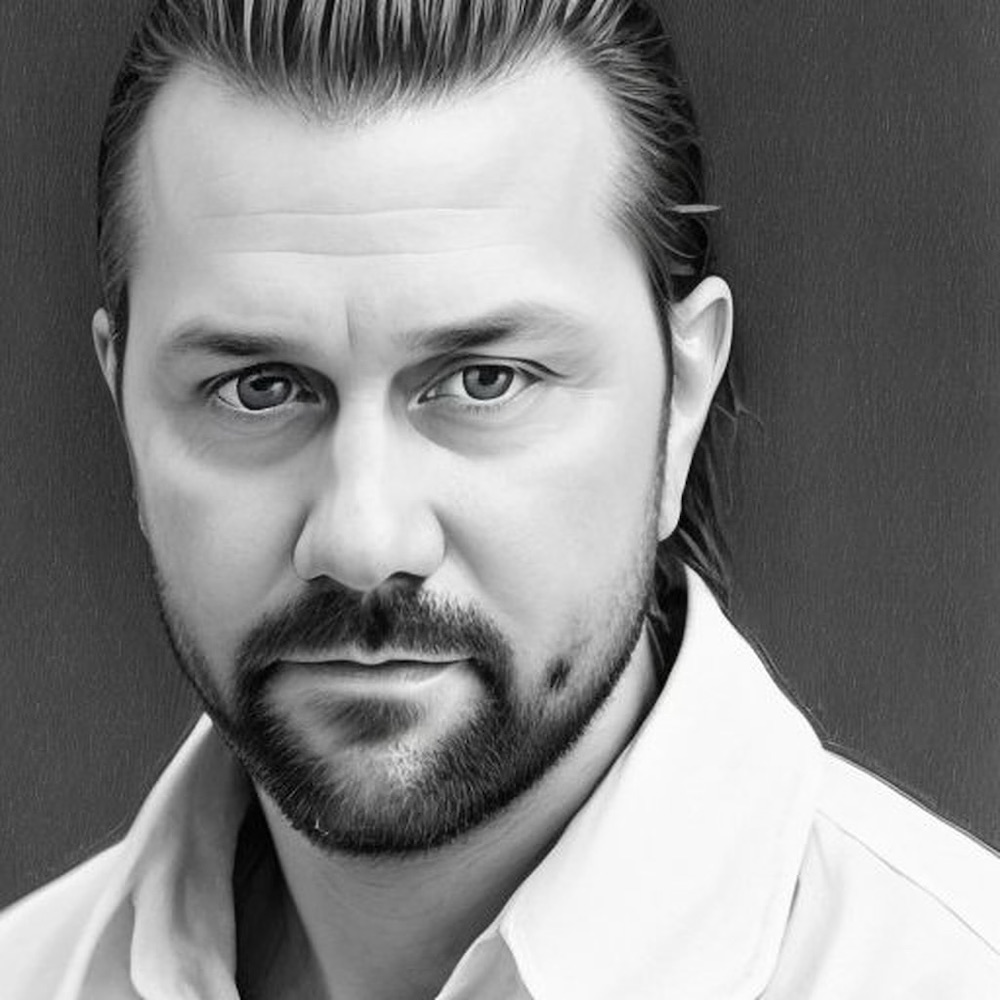As I sit and stare out the window and contemplate human existence, my upcoming day and this overdue column, AI is endlessly cycling—solving problems, making systems more efficient, creating previously unseen connections, secretly planning world dominance and on top of it all, finding time to make fine art!
Yes, art imitates life, and the machines are winning even within the impenetrable blue-chip art world. AI-generated imagery has unshackled itself from Instagram influencers and is currently garnishing the walls of Gagosian Madison Avenue with a new exhibition which was created by the AI-image generating program DALL-E. Bennett Miller, noted film director and AI documentarian, is credited as producing the exhibition, but the topic of the artist is a murky one.
Let’s pit one AI program against another. In this AI battle royal, I will use ChatGPT—a second AI program created by DALL-E parent company Open AI—to critically evaluate and explore its “thoughts” on the implications of algorithmic art. ChatGPT, unlike DALL-E, does not create images, but rather produces text and defines itself as a “conversational dialogue model, a chatting robot, trained by AI and machine learning.”
With ChatGPT free to the public, it is currently used for everything from the most benign to grandiose human ideas—influencers ask for ways to gain more followers, businesses use it to streamline marketing plans, governments ask it to review tactical negotiation strategy. The text for the Gagosian exhibition was written by author Benjamin Labatut partially using ChatGPT.
On to the experiment/AI battle: I have used the following prompt to have ChatGPT produce the following thoughts about AI in major galleries: “Write 250 words exploring the implications of AI art at major art galleries in the style of Artillery columnist Seth Hawkins.”
The rise of AI-generated art has become a hot topic in the art world, with major galleries exhibiting works created by machines. Some critics have dismissed it as gimmicky, but the implications of AI art are profound. With algorithms capable of creating art that is indistinguishable from that made by humans, we are forced to confront questions about what it means to be creative, and what the role of the artist is in the digital age.
The use of algorithms and programming in art creation raises questions about authorship and originality. Who is the true creator of the piece: the programmer or the machine? Moreover, the ability of AI to generate infinite variations of the same work challenges the uniqueness and authenticity of art.
In some ways, AI-generated art contradicts the traditional notion of the artist as a solitary genius. The algorithms that create these works are the product of collaboration between human programmers and machines, blurring the line between creator and created. At the same time, the algorithms are capable of producing art that is completely original and unpredictable—suggesting that there is still a place for individual creativity in the age of AI.
The rise of AI-generated art at major galleries is a worrying development for the art world—it threatens to strip art of its human touch and reduce it to a series of calculations. As we continue to grapple with this new technology, it is important to remember the value of human creativity and the unique experiences that only it can bring to the art world.
Since it seems I may have just been replaced by ChatGPT, I might as well do a final summation and finish with another quote by the genius algorithm.
As AI steamrolls forward—growing and learning by the day, never resting or taking time to contemplate—it is destined to create paradigms we never fathomed would exist in both life and art. Humanity is blind to whether we are barreling toward societal-changing advancement or more likely a Terminator-esque Judgment Day waiting around the next turn.
In the words of ChatGPT and the fitting style of Hunter S. Thompson, one last brief take on AI art:
AI art is a strange and bewildering creature, lurking in the shadows of the art world like some kind of digital ghost. It’s a technology that promises to revolutionize the way we create and consume art, but at what cost? Will we become slaves to our machine overlords, worshiping at the altar of algorithmic creativity?

